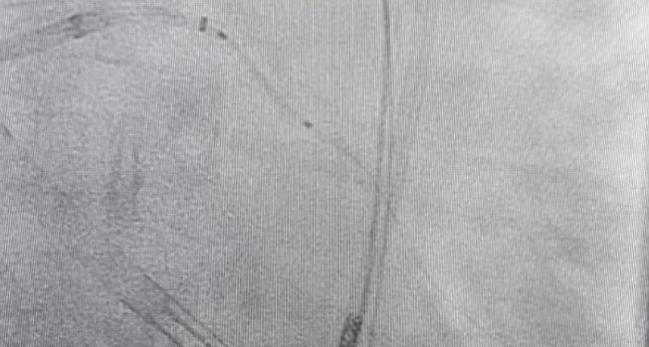Adverse Events Reports for Guide Extension Catheter Should Spur Cautious Use
Devices like the GuideLiner and Guidezilla may be helpful in complex PCI cases, but operators should take care with their use, experts warn.

WASHINGTON, DC—An analysis looking at adverse events related to use of two different guide extension catheters reported to the US Food and Drug Administration should spur operators to use these devices with caution, experts say.
With the increased prevalence of complex PCI today, interventionalists are turning to guide extension catheters like the GuideLiner (Teleflex) and Guidezilla (Boston Scientific) to help them navigate tortuous or calcified coronary arteries. These devices allow for greater flexibility in delivering stents and balloons by adding 20-25 cm of extra depth beyond that of traditional guide wires, but evidence regarding real-world use of them is lacking, Yuefeng Chen, MD, PhD (MedStar Washington Hospital Center, Washington, DC), told TCTMD. Chen presented the study results here yesterday at CRT 2019.
MAUDE Data
To get a better picture of the kind of adverse events associated with guide extension catheter use during PCI, Chen and colleagues queried the FDA’s Manufacturer and User Facility Device Experience (MAUDE) database for reports associated with both the GuideLiner (2010-2018) and the newer Guidezilla (2016-2018).
Of the 473 reports filed in total, more were filed for the Guidezilla (n = 408) than the GuideLiner (n = 65), with the most frequent type of adverse events being catheter fracture, being unable to pass or damaged PCI devices, and coronary artery dissection.
Adverse Events Reported by Device
|
|
GuideLiner (n = 65) |
Guidezilla (n = 408) |
|
Unable to Pass or Damaged PCI Devices |
23% |
13% |
|
Unable to Advance or Pass Catheter to Target Lesion |
- |
29% |
|
Catheter Kinked |
- |
14% |
|
Catheter Fracture |
58% |
40% |
|
Coronary Artery Dissection |
14% |
2.5% |
|
Coronary Artery Perforation |
3% |
0.5% |
|
Aortic Dissection |
- |
0.2% |
|
Thrombus Formation in Catheter |
1.5% |
0.2% |
|
No-Reflow Phenomenon and Hypotension |
- |
0.2% |
|
Death |
3% |
0.2% |
While 77% of GuideLiner reports and 43.6% of Guidezilla reports did not specify the target vessel in which the event occurred, the most commonly affected vessels, regardless of device type, were the left anterior descending (20%) and right circumflex arteries (20%).
It is impossible to know the overall incidence of adverse events associated, much less the total use of, guide extension catheters, since this information would only be known by the manufacturers, Chen said. The take-home message from these data is that the devices are helpful when used properly, he stressed, suggesting several strategies for their use.
“We generally advance the extension catheter over a balloon shaft and avoid direct injection using a powered injector through the extension catheter because the concentrated jet can result in coronary artery perforation or, more commonly, dissection,” Chen said. “We assure full and therapeutic anticoagulation during the procedure, with ACT maintained more than 250 seconds, and we aspirate and de-air the guide catheter after removal of the extension catheter.”
‘Gentle Care’ Required
Session moderator Sarkis Kiramijyan, MD (Adventist Health, Los Angeles, CA), who has experience using both extension catheters, told TCTMD that as long as they are used with “gentle care,” these devices are helpful in complex and difficult cases.
“We sort of alternate between GuideLiner and Guidezilla—it's not really known that one is better than the other,” he said, noting that typically cath labs will only stock one of these devices. “A lot of labs have the GuideLiner, but the Guidezilla is newer and I suspect that the higher numbers of complications are because they are used more. I don't think there's a difference between the two as far as outcomes or effects.”
It is difficult to tell, however, because FDA MAUDE is a collection of voluntary reports, Kiramijyan acknowledged. “If there are more reports I suspect there's probably more usage, but they're both useful devices in certain cases, specific, select cases, and they come in handy.”
He agreed with all of Chen’s strategies for use and seconded them because of the high risk of rupture or dissection he has observed. “It's another device introduced into the vessel, and anything foreign can cause problems,” Kiramijyan concluded.
Yael L. Maxwell is Senior Medical Journalist for TCTMD and Section Editor of TCTMD's Fellows Forum. She served as the inaugural…
Read Full BioSources
Chen Y. Adverse events associated with the use of guide extension catheters during percutaneous coronary intervention: reports From the Manufacturer and User Facility Device Experience (MAUDE) database. Presented at: CRT 2019. March 4, 2019. Washington, DC.
Disclosures
- Chen and Kiramijyan report no relevant conflicts of interest.


Comments